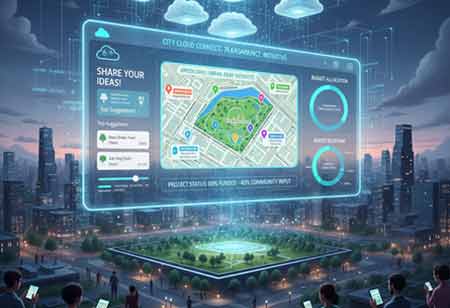THANK YOU FOR SUBSCRIBING
Be first to read the latest tech news, Industry Leader's Insights, and CIO interviews of medium and large enterprises exclusively from Gov CIO Outlook
THANK YOU FOR SUBSCRIBING

By
Government CIO Outlook | Thursday, February 13, 2025
Stay ahead of the industry with exclusive feature stories on the top companies, expert insights and the latest news delivered straight to your inbox. Subscribe today.
Emerging trends in emergency management include AI, IoT, community-based strategies, climate adaptation, public-private partnerships, and social media utilization.
Fremont, CA: Recent trends have changed how governments, organizations, and communities respond to disasters. Technological advancements, policy shifts, and increased public awareness have transformed emergency management practices significantly. Due to the integration of artificial intelligence, community engagement, climate adaptation, and cross-sector collaboration, the future of emergency management is expected to be more agile, resilient, and interconnected.
Technology is central to emergency management, with AI being a key player in improving disaster preparedness and response. AI algorithms can predict natural disasters like hurricanes, earthquakes, and floods with higher accuracy, giving authorities critical lead time to prepare and evacuate affected populations. AI is also used in real-time data analysis during emergencies, enabling quicker decision-making.
IoT has enabled deploying connected sensors and devices that monitor real-time conditions like temperature, humidity, and real-time. These devices can offer early warnings for hazardous events, from fires to chemical spills, allowing authorities to respond more effectively.
There is a growing shift towards community-based emergency management, which focuses on empowering local populations to be more resilient in the face of crises. Community-based approaches emphasize local knowledge, resources, and capabilities, recognizing that communities often know their needs best.
Training local responders, building community networks, and fostering collaboration between community organizations and government agencies are crucial components of this model. For example, volunteer programs, local neighborhood preparedness initiatives, and community evacuation plans are becoming increasingly popular.
With climate change contributing to the frequency and intensity of natural disasters, there is an increasing emphasis on climate adaptation and resilience. Emergency management must now consider the immediate impacts of disasters and the long-term effects of changing environmental conditions.
Coastal communities are developing strategies to cope with rising sea levels, while others are addressing droughts, wildfires, and severe storms. Governments are also investing in sustainable infrastructure to reduce vulnerability, such as flood barriers, firebreaks, and buildings designed to withstand extreme weather conditions.
The complexity of modern emergencies requires cooperation across multiple sectors. Governments, non-profits, private companies, and international organizations increasingly collaborate to deliver more efficient and effective emergency management. Public-private partnerships are essential in creating a coordinated and holistic response to crises. For example, private companies can provide specialized resources like technology, logistics, and supply chains, while public agencies focus on policy and public welfare.
The advancement of social media has transformed communication during emergencies. Platforms like Twitter, Facebook, and Instagram have become essential tools for disseminating information and receiving real-time updates from the public. People now share critical data such as the location of disasters, road blockages, or emergency needs, helping responders gain valuable insight into on-the-ground conditions. Crowd-sourced data allows emergency management agencies to harness vast amounts of information quickly and efficiently.
I agree We use cookies on this website to enhance your user experience. By clicking any link on this page you are giving your consent for us to set cookies. More info

However, if you would like to share the information in this article, you may use the link below:
www.govciooutlookeurope.com/news/the-future-of-emergency-management-trends-to-watch-nid-2355.html



